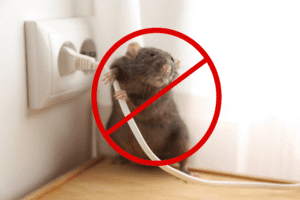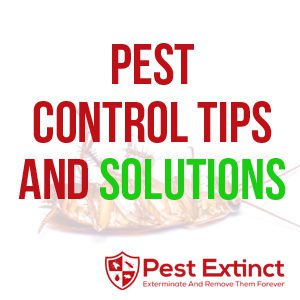
Understanding and Preventing Common Household Hazards
Creating a safe and healthy home environment is crucial for the wellbeing of all occupants. However, many homes may harbor hidden hazards that can pose significant health risks. Understanding these common household dangers and knowing how to prevent or address them is essential for maintaining a safe living space. This comprehensive guide will delve into some of the most common household hazards — mold, lead, asbestos, and radon — outlining prevention strategies and steps to take if these issues are detected.
Mold: The Unseen Menace
Mold is not just an unsightly problem in homes; it poses significant health risks and can indicate underlying issues with moisture and air quality. Understanding mold, its risks, and effective ways to combat it is essential for maintaining a healthy living environment.
What is Mold?
- Fungal Growth: Mold is a type of fungus that consists of small organisms found almost everywhere. It can be black, white, orange, green, or purple and often appears as a patchy, fuzzy growth.
- Thrives in Moist Environments: Mold reproduces through tiny, lightweight spores that travel through the air. It thrives in damp and humid conditions, often growing in bathrooms, kitchens, basements, and around leaks in roofs, windows, or pipes.
The Health Risks of Mold
- Allergic Reactions: For many people, mold spores can trigger allergic reactions, leading to symptoms such as sneezing, runny or stuffy nose, itchy eyes, and skin rashes. People with mold allergies may have more severe reactions.
- Asthma and Respiratory Issues: Mold exposure can worsen asthma in individuals with the condition. In some cases, it can also cause respiratory issues in people who don’t have allergies or asthma, particularly in high concentrations.
- Long-Term Exposure Risks: Prolonged exposure to moldy environments may lead to more severe health issues, especially for people with weakened immune systems, lung diseases, or chronic respiratory conditions.
Identifying Mold in Your Home
- Visible Growth: One of the most obvious signs of mold is its appearance. It often looks like a fuzzy or slimy patch and may change the color of the surface it grows on.
- Musty Odor: Mold can produce a musty, earthy smell, especially in closed spaces like basements or bathrooms.

Causes and Contributors to Mold Growth
- Excessive Moisture: High humidity, condensation, and water leaks are the primary contributors to mold growth. Poor ventilation in humid areas like bathrooms and kitchens can also contribute to the problem.
- Material and Surface Types: Mold can grow on almost any surface, including wood, carpet, paper, and insulation. Porous materials are particularly susceptible.
Prevention Strategies
- Control Humidity Levels: Aim to keep indoor humidity below 60%. Use dehumidifiers and air conditioners to maintain a dry environment.
- Ventilate: Ensure good ventilation, especially in high-moisture areas. Use exhaust fans in bathrooms and kitchens to reduce humidity.
- Promptly Address Leaks: Fix leaks in roofs, walls, and pipes as soon as they are detected to prevent mold growth.
- Regular Cleaning: Regular cleaning and maintenance, especially in prone areas like bathrooms and kitchens, can prevent mold spores from settling and proliferating.
Remediation of Mold
- Small-Scale Cleaning: For small areas of mold, you can clean the mold yourself with water, detergent, and elbow grease. Always wear protective gear like gloves and masks when dealing with mold.
- Professional Mold Remediation: For larger infestations or if you are sensitive to mold, it is advisable to seek professional mold remediation services. Professionals have the equipment and expertise to safely and effectively remove mold from your home.
Lead: A Hidden Hazard in Older Homes
Lead, once a common component in household products, is now known to be a significant health hazard. Understanding the presence and risks of lead in your home, especially in older properties, is vital for ensuring the safety and wellbeing of all occupants.
The Prevalence of Lead in Older Homes
Lead was commonly used in household paints and plumbing materials up until the late 1970s. Homes built before 1978 are likely to contain some lead-based products. It’s particularly prevalent in the paint used on walls, doors, window frames, and sills.
Health Risks Associated with Lead
Exposure to lead can be hazardous, particularly to children and pregnant women. In children, even low levels of lead exposure have been linked to damage to the nervous system, learning disabilities, shorter stature, and impaired hearing. In adults, lead exposure can lead to reproductive problems, high blood pressure, and nerve disorders.


Identifying Lead Hazards in Your Home
- Visual Inspections: Check for chipping, peeling, or deteriorating paint in older homes, particularly in areas accessible to children.
- Lead Testing: If you suspect the presence of lead in your home, consider hiring a certified professional to conduct a lead inspection. They can determine whether your home has lead-based paint and where it is located.
Managing Lead Hazards
If lead is present in your home, it’s important to manage the risk it poses.
- Professional Removal: For significant lead paint hazards, professional removal by a certified lead abatement contractor is the safest approach.
- Regular Cleaning: Regular cleaning of floors, window frames, sills, and other surfaces can reduce the likelihood of lead dust accumulation.
- Safe Renovation Practices: If renovating an older home, use lead-safe work practices or hire contractors certified in lead-safe work practices.
Prevention Strategies for Lead Exposure
Preventing lead exposure is key, especially in homes with children.
- Soil Testing: In addition to indoor lead hazards, have the soil around your home tested, particularly if you live near a busy road or an industrial area.
- Diet and Nutrition: A well-balanced diet can help reduce the absorption of lead. Foods rich in calcium, iron, and vitamin C can be especially beneficial.
Asbestos: The Silent Killer in Building Materials
What is Asbestos?
Asbestos is a group of minerals that was widely used in building materials for insulation and as a fire retardant.
Health Risks
Inhaling asbestos fibers can lead to serious diseases such as mesothelioma, lung cancer, and asbestosis, often years after exposure.
Prevention Strategies
- Professional Inspection: Before renovating older homes, have them inspected for asbestos.
- Avoid Disturbance: If asbestos-containing materials are in good condition, they might be best left undisturbed. Disturbance can release harmful fibers into the air.
Response to Exposure
If asbestos materials are damaged, hire a licensed professional to handle repairs or removal. Never attempt to remove asbestos yourself.


Radon: The Invisible and Odorless Threat
Radon is a naturally occurring radioactive gas that can have serious health implications if it accumulates indoors. Understanding radon, its risks, and the necessary steps for mitigation is crucial for homeowners, particularly those in areas prone to high radon levels.
What is Radon and Why is it a Concern?
Radon gas forms from the natural breakdown of uranium in soil, rock, and water. It typically moves up through the ground and into the air above, dispersing harmlessly in outdoor air. However, it can enter homes through cracks in floors, walls, foundations, and gaps around service pipes. Once inside, radon can become trapped and accumulate to high levels.
Health Risks of Radon Exposure
Radon exposure is the second leading cause of lung cancer after cigarette smoking. Long-term exposure to high levels of radon can significantly increase the risk of developing lung cancer, a risk that is even higher for smokers.
Detecting Radon in Your Home
Radon is colorless and odorless, making it impossible to detect without specific testing. Radon levels can vary significantly from one house to another, even if they are next to each other. Testing is the only way to know if you and your family are at risk from radon.
- Radon Testing: Homeowners can purchase do-it-yourself radon test kits or hire a professional radon tester. Testing should be done in the lowest livable area of the house and preferably during winter months when windows and doors are closed.
Radon Mitigation Strategies
If high levels of radon are found in your home, there are effective ways to reduce its concentration.
- Professional Radon Mitigation: A radon mitigation system, installed by a qualified professional, can effectively reduce radon levels. These systems can vent radon gas from beneath the foundation before it enters the home.
- Sealing Cracks and Openings: Sealing cracks in floors and walls can help prevent radon from entering the home. However, sealing alone is not typically sufficient to lower radon levels but can be effective when used in conjunction with other mitigation methods.
Preventing Radon Accumulation
Preventative measures are particularly important in areas known for high radon levels.
- Building New Homes with Radon-Resistant Features: If building a new home, consider incorporating radon-resistant construction techniques, such as gas-permeable layers and vent pipes.
Radon is a serious health hazard that can be present in any home, regardless of age or location. Understanding the risks of radon and taking proactive measures for testing and mitigation are vital steps in ensuring a safe and healthy living environment. Regular testing and, if necessary, professional mitigation can significantly reduce the risk of lung cancer associated with radon exposure.



The Risk of Pests in Your Home: The Importance of Proper Pest Control
While pests like rodents, insects, and other critters might seem like just a nuisance, they can pose serious health risks and damage to your home. Understanding these risks and the importance of effective pest control is crucial in maintaining a safe and healthy living environment.
Health Hazards of Common Pest Infestations
Pests can carry a range of diseases and create unhealthy living conditions in your home. Here’s a look at some common pests and the risks they pose:
- Rodents (Rats and Mice): These pests can carry diseases such as Hantavirus, Salmonellosis, and Leptospirosis. They can contaminate food with their urine and droppings and cause allergic reactions in some individuals.
- Cockroaches: Known to trigger asthma and allergies, especially in children, cockroaches can also spread bacteria like E. coli and Salmonella.
- Mosquitoes: Besides being a nuisance, mosquitoes are carriers of diseases like West Nile Virus, Zika Virus, and Malaria.
- Termites: While not directly harmful to health, termites can cause significant structural damage to your home, leading to unsafe living conditions.
- Bed Bugs: These pests don’t transmit diseases, but their bites can cause itching, allergic reactions, and sleep disturbances.
The Importance of Proper Pest Control
Effective pest control is vital for several reasons:
- Preventing Health Risks: Regular pest control helps prevent infestations that can lead to health issues.
- Protecting Your Home: Pests can cause physical damage to your home, from chewing through electrical wires to undermining structural integrity.
- Maintaining Quality of Life: A pest-free home is comfortable and safe. Living in a pest-infested home can cause stress, anxiety, and discomfort.
- Early Detection: Regular pest inspections can detect early signs of infestation, making it easier and less costly to address the problem.
DIY vs. Professional Pest Control
While some minor pest issues can be managed with DIY methods, many situations require professional intervention. Professionals can:
- Identify the Specific Pest Problem: Accurate identification is crucial for effective control.
- Provide Expert Treatment Options: Professionals have access to more effective treatments that are not available over the counter.
- Offer Long-Term Solutions: Beyond treating the immediate problem, professionals can provide strategies to prevent future infestations.
- Ensure Safety: Professional pest control takes into consideration the safety of your family and pets, using treatments that are effective yet safe.
Pests are more than just an inconvenience; they are a health hazard and a threat to your home’s integrity. Effective pest control is essential in maintaining a safe and healthy living environment. Regular inspections and treatments by professionals can provide peace of mind and protect your home and family from the dangers of pests.
Understanding and proactively managing household hazards like pests, mold, lead, asbestos, and radon is essential for maintaining a safe and healthy home environment. Regular inspections, timely interventions, and professional assistance when necessary can help mitigate these risks. Remember, the health and safety of your home’s occupants are paramount, and addressing these hazards is a critical component of responsible homeownership.
Worried about pests in your home? Pest Extinct offers reliable and effective pest control solutions tailored to your specific needs.

Leave a Reply